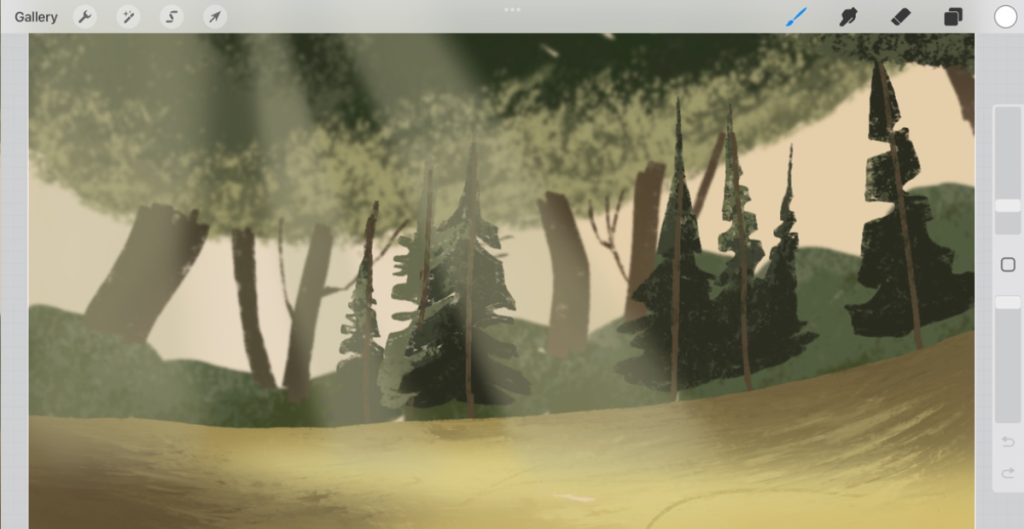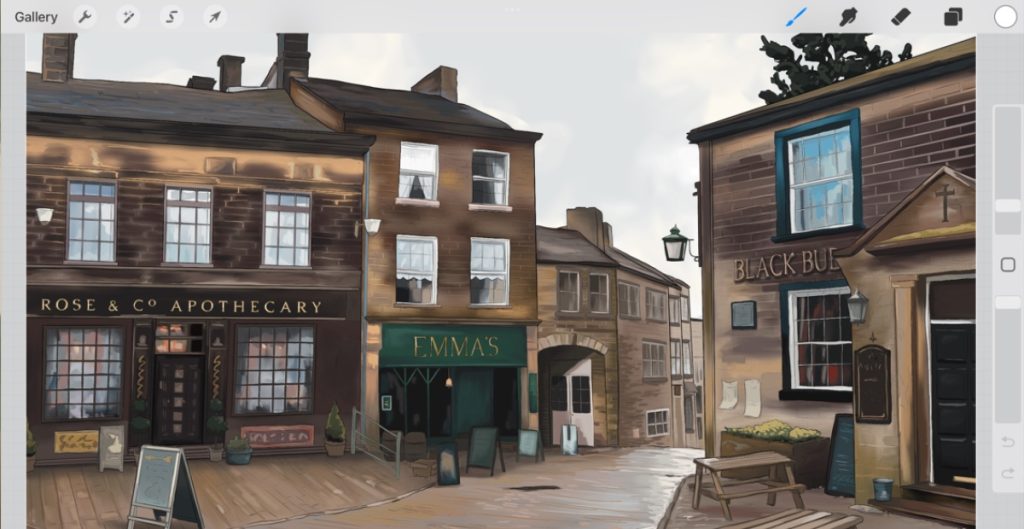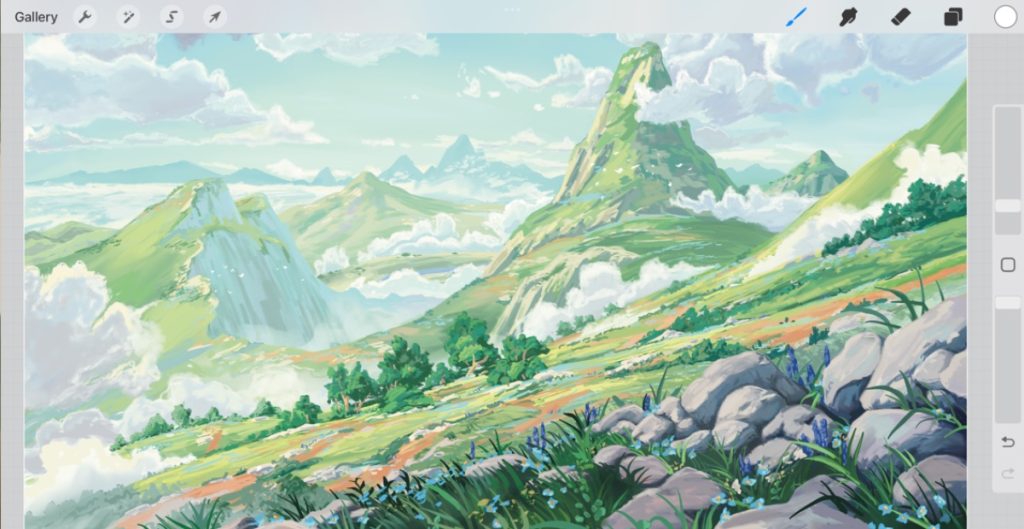Art Study – Why & How to Do Them
Art study – those are two words you either love or hate. Nonetheless, by the end of reading this you will learn the importance of why you should do art studies. As well, you will learn some helpful tips for creating good art studies.
So, whether you are a beginner or a longtime artist, get ready! You are about to learn not only how to replicate artworks, but improve your art skills as well.
Featured Image Reference Credit: Lorenzo Lanfranconci
What Is an Art Study?
An art study is just a method of improving your art by replicating a piece of art. Doing an art study involves a combination of observation and practice. Art studies can be done in any medium. This includes pencil, paint, and even digital mediums. As well, they can be done in any quality. For instance, as doodles, sketches, or exact replications.
Additionally, art studies are a common assignment given in art classes. Usually, a famous artwork is chosen to be replicated. In which case, the assignment can also be referred to as a master study. For example, it is common for art students to do master studies of works by Picasso, van Gogh, Manet, or Michelangelo. However, a master study has nothing to do with “mastering in art” or “getting your masters” at a university. It is just a studying tool for artists.
Anyone can do an art study. They are helpful for both beginner and advanced artists. Carefully copying another artwork is a great way to improve an artist’s abilities. The goals of doing an art study can vary, and many different skills can be gained by doing them. Commonly, the outcomes are a better understanding of how to make good art and an improvement in technique.
Why You Should Do an Art Study
There are many reasons why you should do an art study. Firstly, doing them can help you improve your art. Secondly, you can use them to grow a deeper understanding of a certain technique or principles. Thirdly, learning through making art is often much more powerful than just listening about how to make art. Fourthly, it can be fun to replicate art that you admire, and it may even be relaxing. Fifthly, doing an art study can help take the pressure off of having to come up with your own thing to create. Moveover, art studies can be a good thing to do when you are trying to beat art block.
Furthermore, art studies can help you experiment which direction you want to take your art. For example, the painting below was a style exploration for my comic, Derailed.

How to Do an Art Study
Next will be a discussion of how to do an art study. Of course, there are no hard and fast rules when it comes to doing art studies. However, there are several steps you should probably include in your process. Below is a list of the steps to do a successful art study. Then, after that are detailed tips for each step.
- Picking Your Goals
- Choosing Your Reference
- Taking Notes
- Picking Your Medium
- Replicating with Ease
- Improving Your Art Study
- Getting Feedback
Picking Your Goals
The first step in doing an art study is picking your goals. Before even putting pen to paper, try to have a clear understanding of what you want to achieve. You may want to learn more about a particular artistic principle. For instance, you may want to improve your understanding of depth, shadows, light, form, perspective, color, or brushwork.
Likewise, before starting an art study, decide how much accuracy you want your copy to have. For example, do you want to make an exact copy? This can be a good goal for beginners in order to maximize learning potential. Or do you want to replicate less closely, with more room for interpretation? This can be a good goal for intermediate and advanced artists alike, as well as artists who just want to take inspiration from a piece. Additionally, decide if your goals are to replicate an entire artwork or just parts of it.
Another thing to keep in mind is that you can simplify your replication to make the process not take as long. You can choose to work at a smaller scale to speed up the process. Similarly, you can leave out some details. Furthermore, you can even choose to only copy one particular area of your reference.
Moreover, you may be unsure of your goals, and that is okay too. Maybe you just want to do an art study to understand a piece better. For instance, maybe you just want to learn what makes a piece so amazing and wonderful. You may be unsure what makes an artwork so magnificent. But having a goal of simply recreating it can help you unlock what makes it so great.
Now you understand the importance of picking your goals. Continue reading to learn some more tips for completing successful art studies.
Choosing Your Reference
Another step in creating an art study is choosing your reference. This step may seem self explanatory and straightforward. However, there are a few important insights you may want to know about it.
Mainly, you should know that you are not obligated to study a “master.” Yes, it can be great to learn from famous, professional-level artworks. However, you can do an art study of any piece of art you enjoy. You can even study from things that are not artworks by doing photo studies, life drawings, etc.
Whatever you choose as your reference, try to find something you admire about it. And, for a tip on picking the best references, try to pick things you want your own art to look more like. For instance, I want to be able to create original art of old little towns, so that is exactly what I did a study of, as you can see below.

Taking Notes
An optional, yet highly recommended step of doing an art study, is to take notes. If your goal of doing a study is to understand a piece better and learn from it, then taking notes is a must. You can take the notes mentally, but written is even better. Putting concepts you learn and things you notice into words will help you remember them longer.
So, here are some tips on taking notes when doing an art study: One easy way to take notes is to annotate over a copy of your reference. Just circle some things, add some arrows, and jot down little things you notice. Another idea is to make a list of what it is you like about a piece you are studying. As well, you can try simply describing the piece in your own words. A good exercise is to pretend like you are describing it to a blind person. For instance, notice the angles, overall scale, where the light source is coming from, and what perspective it is in.
If you are an analytical type of person, you will find that taking notes while doing an art study will be particularly helpful for you.
Picking Your Medium
An additional step in doing an art study is picking your medium. Often, art studies are done in the same medium as the piece they are replicating. However, you can use whatever medium you want. For instance, you can use a simple piece of paper or even do your art studies digitally.
Still though, there are a few things you may want to take into consideration. If you want to create your study quickly, it is best to choose a simple medium like pencil or a medium that you are very familiar with. Contrarily, if you want to branch out your skills, you may want to try something more complex, like oil painting. Likewise, if you are trying to get better at a particular medium, then stick with doing a study in that particular medium. Nonetheless, you may find yourself wanting to switch up mediums, and that is totally fine too. A change of pace can sometimes help with art block or finding new inspiration.
So anyways, grab your pencils, markers, paint, sketchbook, iPad, tablet, or whatever tools you think are most suitable for making your art study.
Replicating with Ease
Next is a very helpful tip for doing art studies, and that is how to replicate with ease. If you are having trouble mimicking artworks you may just be lacking in practice. However, there are several things you can do to increase your ability to copy what you see.
Firstly, try to block things out before putting in details. Leave the details for last! Likewise, sketch the main elements in as three-dimensional shapes first to ensure proper perspective and form.
Secondly, try doing thumbnails before starting a larger piece. As well, try warming up with some sketches.
Thirdly, pay attention to angles and try to mimic them as closely as possible. In that same manner, put in the perspective lines and vanishing points before going into the details. Moreover, make sure to copy exactly what you see, not what you think you see.
These tips should help you create much more accurate replications.
Improving Your Art Study
An often forgotten step in doing art studies is to check your work. This will help you make your art studies the best they can be.
For digital artists, you can overlay the piece you are studying on top of your recreation. This will help you see where you messed up and which bits are a little off. Take mental note of what you messed up and remove the overlay. Then, make the changes manually. Repeat this process if necessary until your recreation matches up better with the original.
Another simple way to improve your art study is to simply come back with fresh eyes. Art can take a long time to make. And sometimes, after starting at a piece for hours, it can be hard to notice mistakes. So take a break or even return to your work the next day to check for errors.
Moreover, do not be overly focused on quantity instead of quality. Take some time to reflect on how you did. Where did you fall short? What could you do better next time? Asking these questions will save yourself time and frustration in the long run. In turn, your future art studies will come out even better!
Getting Feedback
A final step in making an art study is to get feedback. You can get feedback from anyone you see fit. For example, ask for feedback from your teachers, fellow students, artists, non-artists, whomever you like. Nonetheless, try to avoid coming off as annoying when asking for feedback. Make sure the other party is interested in giving feedback.
Of course, getting feedback is an optional step. However, sometimes it can be difficult to teach art to yourself. There is no shame in asking for help. In fact, asking others for feedback can help you improve your art much faster. Artists who are at a higher skill level than you probably have some wisdom they would love to share!

All the Best with Your Art Studies!
By now you have learned what an art study is, why you should make them, and some helpful tips for doing them. So, what are you waiting for? It is time to go test out your new knowledge. And remember to have fun doing your art studies!
Thanks for reading. Be sure to share this article with someone you think would enjoy it too. Also, remember to write a comment below. Do you plan to do an art study? What of?
And, if you like this article, subscribe for more content like this. Finally, be sure to read my comic, Kindred Not.


Discussion ¬